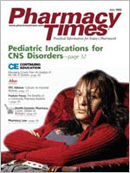Framework Addresses HIT
The eHealth Initiative recently released the Parallel Pathways Framework for Quality Healthcare, to align emerging incentive programs with both quality goals and the health information technology (HIT) infrastructure needed to reach those goals to support higher-quality, safer, and more effective health care. Reports from governing bodies and private-sector groups?such as the Institute of Medicine, the Leapfrog Group, and Connecting for Health?have seen the value of HIT in addressing the quality, safety, and efficiency obstacles within the health care system. Concurrently, the creation and implementation of incentives or pay-for-performance programs are increasing.
Although there is recognition of the significance of HIT use by providers and the sharing of information across institutions to support a thorough view of the patient at the point of care, adoption by providers remains low. Reasons for the lack of acceptance include the lack of standards and the major changes in work flow needed to move toward implementation. Many believe that the biggest barriers to HIT adoption are the lack of funds to purchase the systems and prevailing reimbursement methods that reward the volume of service, as opposed to outcomes or activities that would provide improved health care.
The Framework provides assistance to purchasers, payers, practicing clinicians, and regional or community-based partnerships focused on improving health information exchange in their markets, through HIT and the sharing of health care data. The Framework is designed in stages to help align incentives with 3 key areas: quality capabilities, HIT capabilities within physician practices, and health information-sharing capabilities within regions and communities across the United States.

